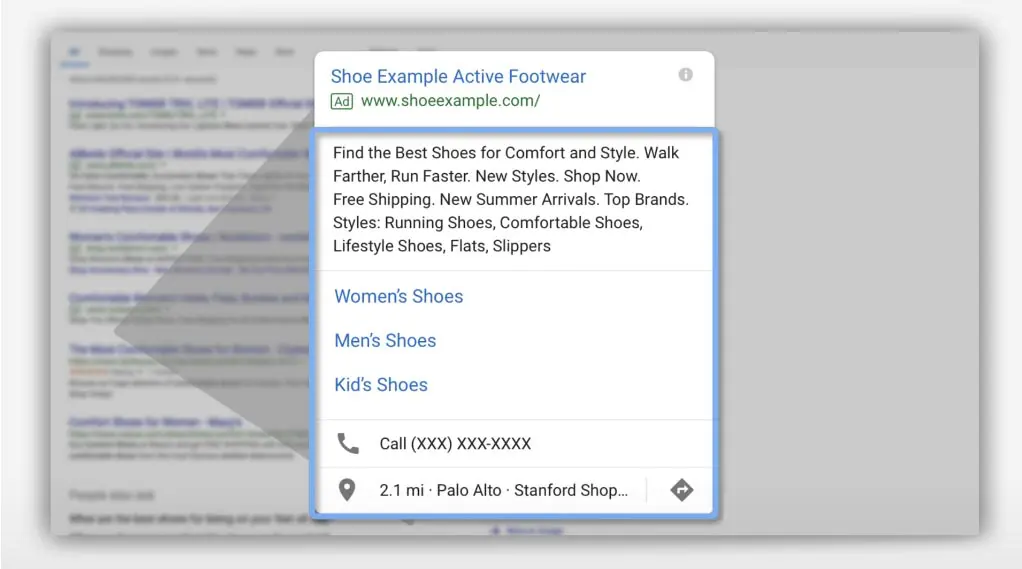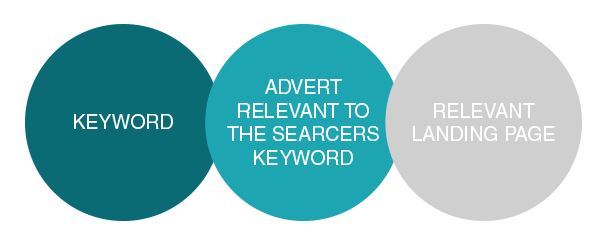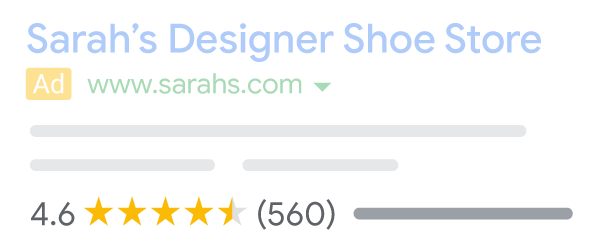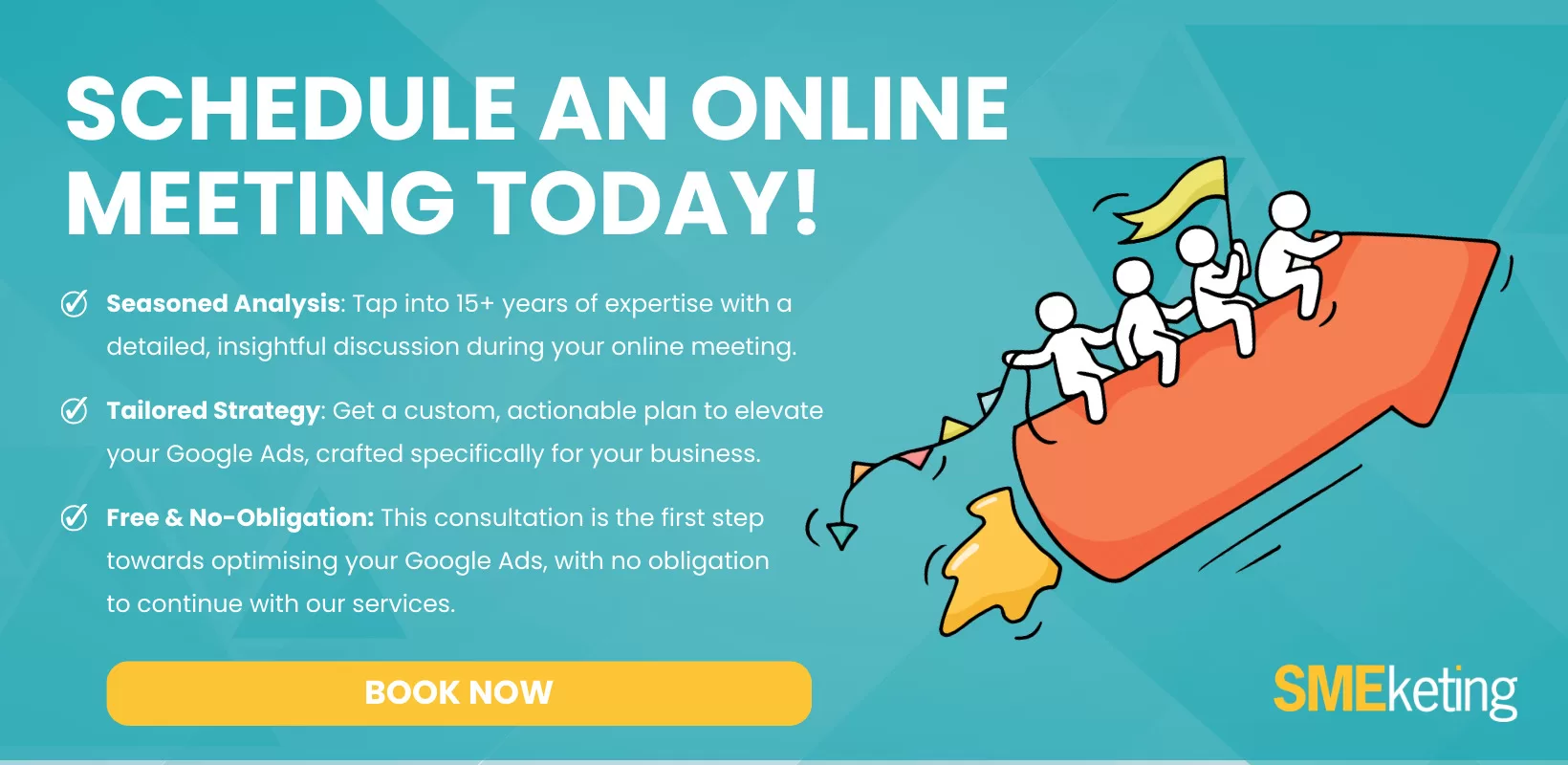Google Search Ads (as opposed to Google Shopping Ads, or Google Display Ads – learn more about the different ad types here) are the cornerstone of online advertising. Honing and perfecting your ad is the difference between success and failure, profit and loss. Here are two facts to consider:
5.4 billion Google searches are made each day
For every $1 a business invests in Google Ads, they earn $8 profit through Google Search*
Understanding these two facts is critical to appreciating the importance of Google Search Ads. And why you need to work hard on your ad to succeed. After all, there’s plenty of competition ready to eat your lunch and poach your customers.
There’s just one important consideration. In June 2022, Google is phasing out Extended Text Ads (ETAs) in favour of Responsive Text Ads (RSAs). Nevertheless, the advice below covers both ad types.
Here are ten best practices to use when crafting your Google Search Ads campaigns:
1. Use Ad Extensions
No Google Search ad is complete without ad extensions. Often overlooked, ad extensions provide two key benefits: (1) more information and (2) more space.
Let me explain.
There are multiple ad extensions, from phone numbers to customer reviews. Each extension lets you add a little extra information into the ad, leading to more conversions. For example, pairing the phone number extension with “Contact us today” in the copy will boost phone calls.
Oh, and using all the extensions creates a significantly larger ad on the page. So, you’re more likely to get noticed.
2. Write creative copy
To maximise your ad’s effectiveness, use every trick in the book. What does great copy look like? First, it sells the product, not the business. Create a need in your customer’s mind, then fill it with your product or service. Use emotional triggers and words to grab their attention. There are no prizes for boring copy.
You should also speak to your audience directly. Use “you” or “your” in your ads to personalise the relationship.
For example: “Hiring is difficult. Training new employees should be easy. Book Your Demo Today!”
3. Add a call-to-action
What’s the point of your ad? What’s your goal? That’s your Call to Action (CTA). It’s the thing you want your potential customers to do.
Do you want them to book a consultation? Buy your product? Browse now? Get in touch?
Whatever your CTA is, it should feature in your ad – ideally near the end. Look at the example from #2 – “Book Your Demo Today!” There’s no ambiguity, no confusion. And you can even team up a CTA with an ad extension, e.g., a phone ad extension with a “Call today!” CTA.
4. Change your landing page
The secret to converting interest into custom is minimising the steps between seeing the ad and buying the product or service: the more steps, the more chance a customer will lose interest.
Think about it. If you ask a customer to “Buy today!” – is your landing page your website home page? That means they’ll need to go to the product section and start searching. Cut out the middleman. Direct your client to the land page related to your product, service, or contact details.
5. Use your brand name
Imagine a business card with your name or a painting without the signature. It’s the identifying mark. The bit that makes it yours – and lets everyone know too. If you have a known brand name or need to ensure people know they’re visiting the official brand page – then make that clear in your ad.
Including your brand name – as well as your product or service names – makes it super clear what you’re offering. It also increases the relevance of your ad to their search. Meaning you’ll generate more clicks and ultimately more profit. Raising brand awareness doesn’t hurt either.
6. Include top keywords in your headline
Keywords aren’t just the phrase you bid on; they’re the thing the user is searching for. Therefore, shouldn’t it be the first thing they read in your ad? Wouldn’t that instantly capture their attention?
Yes! It would. Identify the top-performing keywords, and include them in your headlines. Not only will this create interest in your ad, but it also increases the chance your ad will be clicked.
7. Make every character count
Anyone can write a product description. Or list a company’s benefits. The genius of ad copy is doing it in the three 30-character headlines Google Ads provides, plus two 90-character descriptions.
All too often, people underutilise characters, however. That’s a mistake. Make every single character sell your product and services. If you’ve got a little extra space, think of a few additional details you can include. Do you offer free shipping? Is there a discount available? Are you trustworthy and affordable?
And don’t forget to include your display URL, either.
8. Go local
Most companies don’t have a global reach. They can’t service customers halfway around the world. You want to localise your ads if you’re a UK-based targeting UK customers, or a brick-and-mortar retailer with a local footfall. Including your city or regional name in your ads can also help increase relevance.
To go further, link a Google My Business account to Google Ads via the location extension to appear inside Google Maps.
9. Try split testing
You’ve got two copies for your ad – which do you pick? The answer is don’t. Try the two ads at the same time. showing them to different users. Sit back and wait – then select the ad with the best performance.
Even better, try different variations in the ad. Add different display URLs, highlight other product benefits, use a different CTA. It’s all about refining your ad to maximise your profit compared to your ad spend. So, as your experiment, never lose sight of the metrics.
10. Add social proof
Trust – it’s the bedrock of business. If you don’t trust a product or a company, you don’t buy. You do trust other customers, however. You follow the crowd. After all, if this person says it’s amazing, maybe it is.
That’s the logic of a testimonial or a star rating.
Using a testimonial inside the ad copy is the best way to promote your product. And it’s so simple to do. If you can’t fit a testimonial within the character limit, mention that you have case studies/reviews.
Likewise using a review tool like Trustpilot means your ad will show with a star rating underneath it – instantly providing social proof that you are a trusted company.
I hope these tips have given you some inspiration on how you might improve your Google Search Ads. If you want any assistance with your current Google Ad campaign, then read this article: Google Ad Advert Writing Tips.
If you’re worried about the state of your Google Ads adverts, then SMEketing can audit your campaign and provide you with a comprehensive list of actions to improve your account instantly.
- How to Do Keyword Research for Google Ads - January 15, 2024
- A Comprehensive Guide to Google Ads for B2C Businesses - January 8, 2024
- How to Write Calls to Action (CTAs) for Google Ads - December 25, 2023










